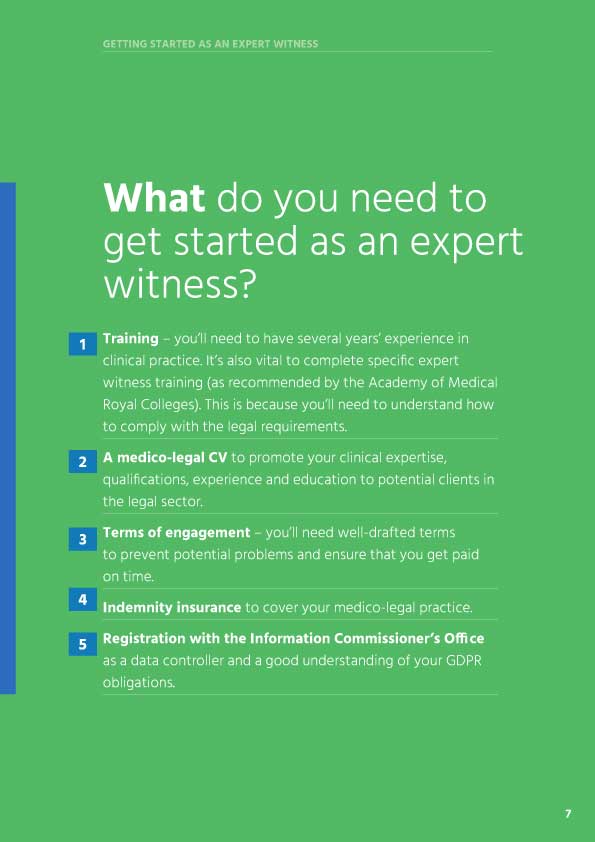Witness evidence: is it just one person’s word against another’s?
Where there is a dispute of facts, people often think it is just one person’s word against another’s. In reality, most of the time, it is not.
Clinical negligence cases do not normally depend on what witnesses of fact say. Expert evidence is usually more important. The key issues tend to be whether care was adequate and, if not, whether it caused loss. These are matters of medical opinion.
Occasionally though, a case turns on a dispute of fact: what was said and done when. Consent cases are an example. A patient claims that doctors failed to warn her of a risk. The doctor disagrees. Another example is in birth injury cases. Here, the issue is the timing of a decision to carry out a Caesarean section, which, if carried out earlier, would have avoided the injury. During a crisis, no one made notes and there are different accounts of what happened and when. Statements from the people who were there may be crucial.
What happens when the witnesses disagree? How does a judge work out who to believe? Is it all down to the impression each witness conveys in the box?
There are case reports which give guidance about how to assess the credibility of witnesses. One is a recent tax case. There, the judge carefully considered comments by other judges about which approach to take[1]. One of the common themes of those comments is that witness evidence is not just assessed by a witness’s demeanour. It must be weighed against ‘objective facts’.
Agreed facts
The starting point is to consider how a witness’s testimony fits, given the background of agreed facts. These facts are not disputed and should be set out in the statements from both parties. So, in a medical negligence case, there may be no dispute that the patient had medical condition X, attended hospital Y and saw Dr Z. Witness evidence which fits with those facts will be more persuasive than evidence which does not.
‘Incontrovertible’ evidence
There are then facts which are not necessarily agreed but cannot be in doubt. These facts are independent of human memory and are ‘incontrovertible’. The evidence may comprise documents. Or there may be some form of hard evidence: a broken implant, burn marks on the skin or a dented bumper.
Sometimes the lack of a document is the important issue. If the witness’s story was true, one may expect to see some written record. At times, it might be alleged that a patient suffered harm after failing to attend an appointment. The clinical record says, ‘DNA’ (did not attend). Does that imply the patient was at fault? The patient may say she was not told of the appointment. Is there a letter among the records inviting the patient to attend? Was she sent a reminder text? The absence of any record may suggest an administration error rather than that the patient was to blame.
In one Court of Appeal report, it is clear that the lack of documentary evidence was crucial to the trial judge’s decision in the Court below:
“…what has impressed the judge most in his task of fact-finding was the absence, rather than the presence, of contemporary documentation or other independent oral evidence to confirm the oral evidence of the respondents to the proceedings” (my emphasis)[2].

Learn how to find high-paying clients and secure top instructions:
- Designed specifically for medical professionals
- Get insider tips to help you secure high-paying work
- Learn online in our live training
Keen to take on medical expert witness work but feeling daunted at the thought of running a business?
On our live online course, you’ll learn all the essentials needed to get your medico-legal practice up and running.
I suggest two tests to consider how persuasive documents will be. First, were they contemporaneous – were they made at the time as opposed to made later? In my example of the birth injury case, the notes of fraught events during a troubled labour may have been written up afterwards. They were made only shortly after the events, but the delay meant that the timings given were not entirely reliable. Secondly, were they made with the dispute in mind? Documents made for other purposes, with no thought of litigation in mind, may be more persuasive than those which raise the suspicion that evidence has been manufactured.
Lord Bingham wrote an influential article on witness evidence. As he said, “In many cases, letters or minutes written well before there was any breath of dispute between the parties may throw a very clear light on their knowledge and intentions at a particular time” [3].
Medical records are the most important documents in most clinical negligence claims. The records are, of course, compiled by clinical staff: the patient is unlikely to have had any input. When patients see the records – often months or years after the event – they may think the records are wrong. They may be right on occasion. But it is unlikely that many entries will be wrong. And because changes to computerised records can be tracked, it is unlikely they will have been altered after the event. (There are, however, cases where handwritten records appear to have been altered or added to – I have in the past instructed a handwriting expert on the point.) My rule of thumb is that there is an inverse proportion between the number of alleged inaccuracies and the credibility of the claim. The more errors a patient alleges, the less credible the case.

We’ve produced a guide for medical professionals which is packed full of useful information and tips to help you get started as an expert witness.
That is only a rule of thumb – a presumption. In some cases, notes may be made after the event and are not always accurate. One example, already referred to, relates to birth injury claims, where there has been a period of crisis during labour. Notes are sometimes written up after the event. Timing and sequencing may not always be recorded correctly. Those matters may be crucial: claims often turn on the length of very short periods of hypoxia.
I have two other rules of thumb.
1. A more detailed record is likely to be more persuasive than a less detailed one. A brief note with little detail of the history taken or the examination carried out may suggest a lack of thoroughness in the assessment. The allegation that a GP failed to record a particular symptom may seem unlikely in the face of a detailed note but credible in the face of a cursory one.
2. If the details are backed up by a separate entry from another practitioner, this could provide some verification. But it is important that the sources are independent. There are occasions when records contain a mistake, which is simply repeated by clinicians who have read that note. Repetition alone should not increase credibility.
The first steps in considering the credibility of witness evidence, then, are to assess it against the background of agreed facts and ‘incontrovertible’ evidence – evidence established independently of human memory. Credible evidence will be consistent with those sources.
Demeanour
We may think that the credibility of witness evidence is all about demeanour – the impression a witness creates. It may be important. The way people conduct themselves can be an important indicator of their credibility. But it may be less important than we think.
According to the Court of Appeal in one case:
“This task [assessing credibility] is not to be carried out merely by reference to the impression that a witness made giving evidence in the witness box. It is not solely a matter of body language, the tone of voice or other factors that might generally be called the ‘demeanour’ of a witness…This may be particularly important in cases where the witness is from a culture or way of life with which the judge may not be familiar” [4].
Forming assessments of people is subjective. Different people will respond to a witness differently. When we warm to a person, we tend to accept what they say. Psychologists refer to this as the ‘halo effect’. This is an unconscious bias. Being likeable is not the same as being truthful.
One judge put it nicely in warning that our assessments of people can be “distorted through the prism of prejudice” [5].
Tests of truthfulness
If we cannot trust judgments of demeanour, how can we decide whether a witness is credible? Back in 1968, Lord Pearce suggested that assessing credibility involved several questions: [6]
1. Is the witness a truthful or untruthful person?
2. Is the witness telling the truth on this issue? (Even people who are untruthful tell the truth sometimes.)
3. Are a witness’s memories correct? Or have they been altered by unconscious bias or wishful thinking?
4. Whether honest or not, did the witness interpret things correctly? Or was the witness mistaken?
These questions break down the issue of credibility into composite parts. But there is still a difficult question around whether the witness is telling the truth as he or she sees it. In his article, Lord Bingham outlined a further five tests:
1. How consistent is the witness’s evidence with the facts agreed or demonstrated by the evidence (what I have referred to as agreed facts and incontrovertible evidence)?
2. How internally consistent is the witness’s evidence?
3. How consistent is this with what the witness has said at other times?
4. The witness’s credibility in relation to matters not to the litigation
5. The witness’s demeanour.
Lord Bingham thought the first three factors were particularly useful as pointers about where the truth lay.
There are other considerations, such as motive. Evidence which advances the witness’s cause in some way may be tainted by self-interest. That does not, of course, mean that a party giving evidence in support of their case is assumed not to be telling the truth. But motive is an important consideration.
Generally, simple stories are more persuasive than complex ones. Of course, a more complex story may still be true. But simple stories are easier to grasp and appear more coherent. Philosophers cite ‘Occam’s razor’, the principle from a 14th-century scholastic philosopher: one should normally favour the simplest answer to a question over the more complex ones.
Conclusions
So returning to the original question, is judging between different witness accounts simply one person’s word against another’s? It is not. There are principles applied by the Courts in evaluating witness evidence. The starting point is how it fits with agreed facts and incontrovertible evidence. There are then other factors that the Court can take into account before it comes to demeanour, which is at the bottom of the list.
***Take a look a Paul Sankey’s blogs on ‘Spinal surgery and lack of informed consent’ and ‘Is consent to treatment valid?’
[1] Conegate Ltd v Revenue & Customs [2018] UKFTT 82 (TC)
[2] Wetton (as Liquidator of Mumtaz Properties) v. Ahmed and others [2011] EWCA Civ. 610
[3] ‘The Judge as Juror: The Judicial Determination of Factual Issues’, 2010
[4] Wetton (as Liquidator of Mumtaz Properties) v. Ahmed and others [2011] EWCA Civ. 610
[5] Judge Simon Brown QC, Piper v Hales, QBD 18/01/2013 [6] Lord Pearce in the House of Lords in Onassis v Vergottis [1968] 2 Lloyds Rep 403 at p 431.

Get all the one-to-one support, resources and CPD you’ll need to run a successful and profitable medico-legal practice through our brand-new membership scheme.
Our experts can help you with setting up your practice but we can also advise on specific scenarios or challenges you may be facing. Think of us as your medico-legal agony aunt – here to offer expert advice whenever you need it.
